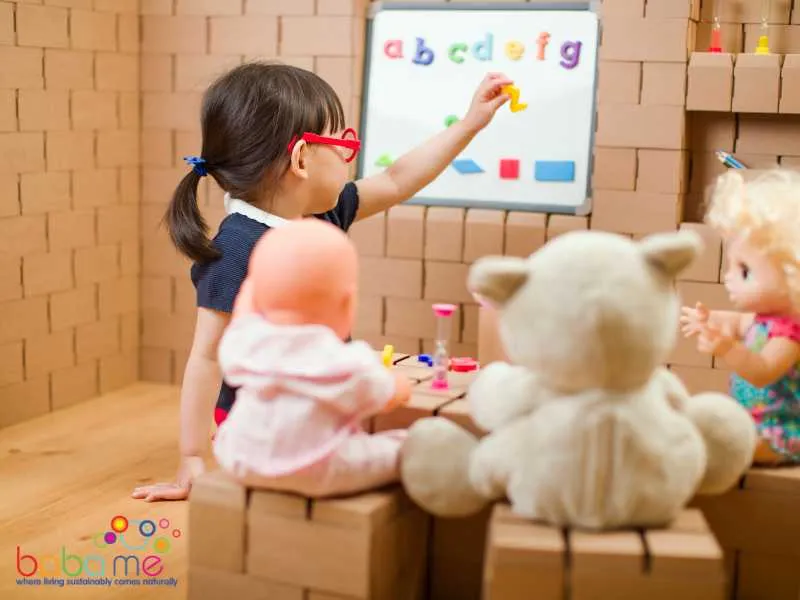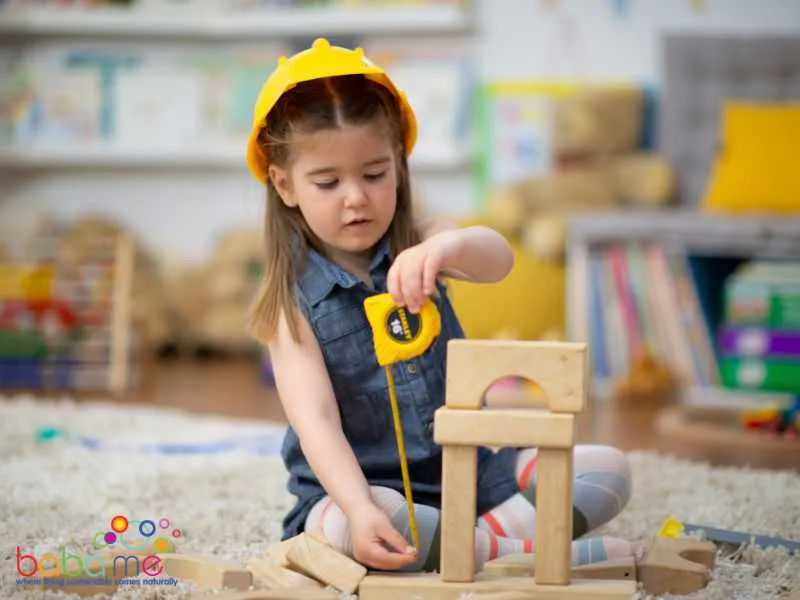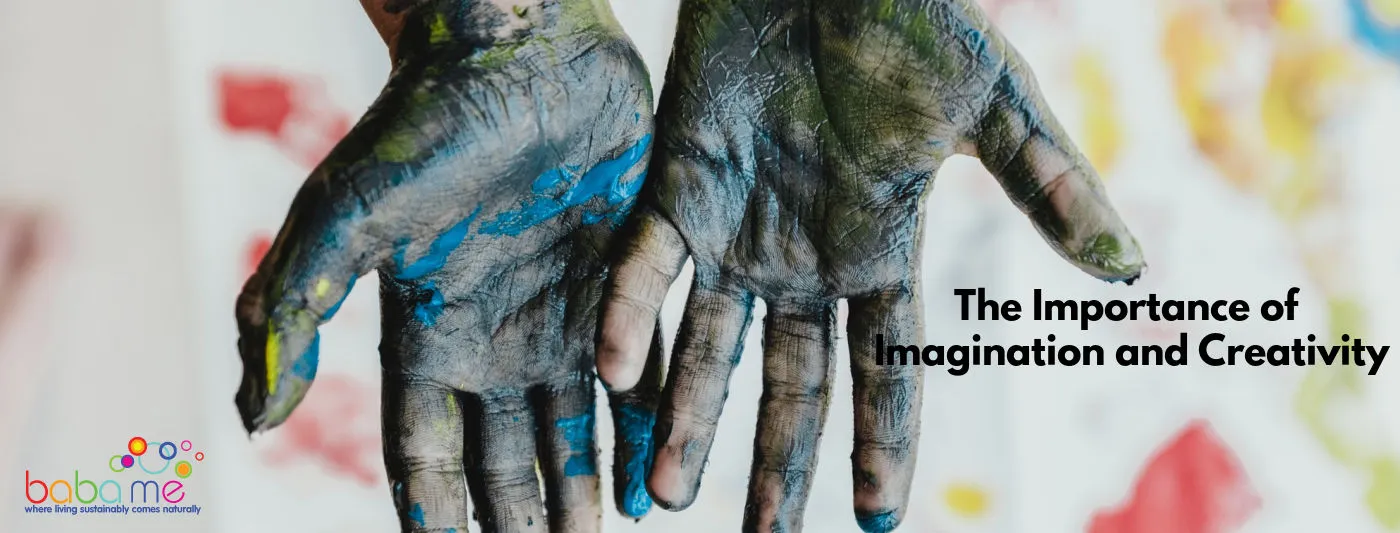How arts and crafts help foster the development of your child’s imagination and creativity
Imagination and creativity are two of the most important parts of childhood, helping children learn numerous essential skills. Many children can turn ordinary items like a cardboard box or a piece of paper into something extraordinary and special through arts and crafts.
Imagination and creativity affect our entire existence. It impacts all that we do, consider and make. It allows us to experiment with new things and make discoveries to make our lives better. These two characteristics are key to the advancement of technology and innovation.
Regardless of what we do for a living, imagination and creativity influence everything we do in life.
Benefits of Imaginative Play
Key Takeaways
Imaginative play is essential for childhood development and can help children develop creativity, problem-solving, and emotional regulation skills.
Imaginary play allows children to explore different roles and scenarios, which can help them develop empathy and improve language development.
Caregivers and educators can support imaginative play by providing children with a positive and supportive environment, as well as materials and scenarios to stimulate their creativity.
| Benefit | Description |
|---|---|
| Cognitive Development | Imaginative play promotes thinking, reasoning, and problem-solving abilities. |
| Creativity Boost | Children can invent scenarios, roles, and outcomes, expanding their creative horizons. |
| Social Skills | Playing pretend roles in groups teaches negotiation, cooperation, and understanding of social cues. |
| Emotional Development | Pretending to be in different situations helps children understand and express their feelings. |
| Language Skills | Role-playing and storytelling can significantly enhance vocabulary and language comprehension. |
| Empathy Cultivation | By “walking in someone else’s shoes” in their play, children can develop a deeper understanding of others’ feelings. |
| Motor Skills | Imaginative play, especially when it involves physical activities, can aid in developing both fine and gross motor skills. |
| Understanding of the World | Role-playing different professions or scenarios helps children grasp various aspects of the world around them. |
| Concentration | Engaging in imaginative scenarios can improve a child’s focus and attention span. |
| Problem-Solving | Overcoming challenges in their play scenarios fosters resilience and adaptability. |
| Independence | Children often use imaginative play to understand and process their experiences, aiding in self-reliance. |

The Role of Parents in Encouraging Imaginative Play
As a parent, you play a crucial role in encouraging your child’s imaginative play. Here are some tips on how to promote imaginary play effectively.
The Importance of Encouragement
First and foremost, it’s important to encourage your child’s imaginative play. This means giving them the space and time to explore their creativity and imagination. When your child engages in imaginative play, they are developing important skills such as problem-solving, creativity, and social skills.
By encouraging this type of play, you are helping your child build a strong foundation for their future development.
One way to incorporate imaginative play into your child’s development is to provide your child with plenty of props and toys that can be used for imaginative play. This could include dress-up clothes, blocks, dolls, and other toys that encourage creativity and imagination.
You can also encourage your child to use their imagination by asking open-ended questions and giving them the freedom to explore and create on their own.
What is the right age to introduce imaginative play to a child?
Imaginative play can be introduced to a child as early as 18 months to 2 years old, although it often becomes more elaborate and developed around the age of 3 to 4.
Children at this stage start to engage in pretend play, where they use their imagination to imitate real-life scenarios, express positive and negative feelings and create fictional situations. It’s very normal child development for them to take part in fantasy play or role play everyday life.
It’s important to provide age-appropriate props and encourage their creativity during this formative period in your child’s life as its such a healthy contributor towards their cognitive and social development.
Creating a Safe and Creative Play Space
Another important aspect of encouraging imaginative play is creating a safe and creative play space for your child. This means creating a space where your child feels comfortable and safe to explore and play. You can do this by setting up a designated play area in your home that is free from distractions and hazards.
When creating a play space, it’s important to consider your child’s age and interests. For younger children, you may want to include soft mats and toys that are safe for their age group. For older children, you may want to include more complex toys and games that challenge their creativity your child’s imagination.
As a parent, you also play an important role in modeling imaginative play for your child. This means taking the time to engage in imaginative play with your child and showing them how to use their imagination to explore and create active play.
Whether you’re playing dress-up or building a fort, talking to their stuffed animals your child will benefit from seeing you engage in imaginative play and will be more likely to follow your lead.

Tools and Props for Imaginative Play
When it comes to imaginative play ideas having the right tools and props can make all the difference in creating a fun and engaging experience for your child. Here are some ideas for everyday objects and toys and materials that you can use to encourage your child’s imaginary play.
Everyday Objects
Sometimes the simplest objects can spark the most imaginative play. Here are a few everyday objects that you can use to inspire your child’s creativity:
- Pen and paper: Provide your child with a pen and paper, and watch as they create their own stories and drawings.
- Cardboard box: A cardboard box can be transformed into anything from a rocket ship to a castle to a car. Encourage your child to use their imagination to create their own world within the box.
- Objects from nature: Rocks, leaves, and sticks can be used to create a variety of imaginative scenarios, from building a fairy house to creating a nature-inspired art project.
Toys and Materials
In addition to everyday objects, there are a variety of toys and materials that can be used to encourage imaginative play. Here are a few ideas:
- Blocks: Blocks come in a variety of shapes and sizes and can be used to build anything your child can imagine.
- Puppets: Puppets are a great way to encourage storytelling and imaginative play. Your child can create their own puppet shows and act out their own stories.
- Dress-up clothes: Dress-up clothes allow your child to become anyone they want to be, from a superhero to a princess to a doctor.
Keep in mind that the most important thing when it comes to imaginative play is to let your child take the lead. Encourage them to use their imagination and provide them with the tools and props they need to bring their ideas to life.

Imaginative Play and Child Development
Imaginative play is a critical component of child development. It allows children to explore the world around them in a safe and creative way. Through imaginative play, children can develop a range of skills that are essential for their growth and success. In this section, we will discuss the impact of imaginative play on language development, social development, and emotional development.
Imaginative play is an excellent way for children to develop their language skills. During imaginative play, children have the opportunity to practice their communication skills by expressing themselves and engaging in conversations with others. They can also learn new vocabulary and sentence structures by pretending to be different characters and acting out different scenarios.
Imaginative play is also essential for the development of social skills. When children engage in imaginative play, they learn how to take turns, share, and cooperate with others. They also learn how to negotiate and resolve conflicts, which are essential skills for healthy relationships.
Imaginative play can also help children develop their emotional competence. Through pretend play, children can explore different emotions and learn how to regulate their own emotions. They can also develop empathy by putting themselves in someone else’s shoes and imagining how they would feel in a particular situation.
The Learning Process Through Imaginative Play
Imaginative play is a fun and engaging way for children to learn and develop new skills. It allows them to explore new concepts, build problem-solving skills, and develop communication skills. In this section, we’ll take a closer look at how imaginative play can enhance the learning process for children.
Exploring New Concepts
Imaginative play provides children with the opportunity to explore new concepts in a safe and engaging environment. They can use their imagination to create new scenarios and experiment with different ideas. For example, they might pretend to be doctors and nurses, exploring the human body and how it works. Or they might play with toy cars, learning about the different types of vehicles and how they move.
Through imaginative play, children can also learn about cause and effect. They can experiment with different actions and observe the results, helping them to develop their reasoning skills and decision-making skills.
Building Problem-Solving Skills
Imaginative play is a great way for children to build problem-solving skills. They are presented with different scenarios and challenges, and they must use their creativity and imagination to find solutions. For example, they might have to figure out how to build a fort using only blankets and pillows, or how to rescue a toy from a pretend fire.
Through imaginative play, children can also learn how to work together to solve problems. They can practice communication and teamwork, helping them to develop important social skills.
Developing Communication Skills
Imaginative play is an excellent way for children to develop their communication skills. They must use language to express their ideas and communicate with others, helping them to build their vocabulary and language skills. They can also practice active listening, learning how to pay attention to what others are saying and respond appropriately.
Through imaginative play, children can also learn how to express their emotions and feelings. They can role-play different scenarios and experiment with different ways of communicating, helping them to develop their emotional intelligence.

The Impact of Imaginative Play on Preschoolers
Imaginative play is a crucial element in the development of preschoolers. It has numerous benefits that can have a positive impact on their growth. Here are two key ways that imaginative play can impact preschoolers:
Cultivating Independence
Imaginative play can encourage independence in preschoolers. When children engage in imaginative play, they are often the ones in charge of the play scenario. This means that they have to make decisions, solve problems, and create their own narratives. All of this helps to build their confidence and self-esteem.
Through imaginative play, preschoolers can also learn to take risks and make mistakes without fear of judgment. They can explore new ideas and try out different roles, which can help them discover their own interests and talents.
Fostering Empathy
Another way that imaginative play can impact preschoolers is by fostering empathy. When children engage in imaginative play, they often take on the roles of different characters. This can help them understand and appreciate different perspectives.
Through imaginative play, preschoolers can practice showing empathy and understanding towards others. They can learn to communicate effectively and work together towards a common goal. This can help them develop strong social skills and build positive relationships with others.

Creativity & Importance of Creative Play
Arts and crafts are apparently necessary for a kid’s development, giving them the creativity and critical thinking capacities they’ll require as grown-ups. This sort of artistic activity should be empowered however much as could be expected to give kids the potential to develop, learn, and envision.
Maybe one of the clearest benefits of artistic play like arts and crafts is an improved imaginative and creative capacity. Creative and imaginative play gives kids the skills they need when they grow older for innovative critical thinking and solid problem-solving. Creativity in children can later guide in their discovery of new things, paving the path of innovation.
Imagination and creativity lead the way for many potential outcomes. It is the place where curiosity, resourcefulness, and considering new ideas start for children’s development. Arts and crafts and other artistic activities are also good ways for children to find out about the world around them.
Finishing colouring books, drawing pictures or making something amazing out of ordinary things provides children opportunities to feel good about themselves and gives them a sense of accomplishment and achievement.
Creativity and imagination help children develop solid problem-solving skills and these are among the essential skills that everybody needs to have, regardless of whether they need to solve simple problems at home or complex business-related problems.
Having good problem-solving skills helps children navigate their lives when they are older and are less dependent on their parents. Just like adults, children face problems too. Even if these problems are simple, they could cause frustration.
Furthermore, creativity and imagination foster emotional, social and cognitive development in children. All parents want to help their children reach their full potential and achieve developmental milestones. In early learning and development, solid problem-solving skills and cognitive skills are objectives for children’s development.
Encouraging your children to get into arts and crafts is one way to stimulate their imagination and creativity. Even as simple as joining your child in finishing her colouring book will encourage her to continue doing arts and crafts.
Arts and crafts not only help improve creativity and imagination, but these activities also facilitate the development of other skills like fine motor skills, hand-eye coordination, dexterity, memory, concentration and more.
Arts and crafts also encourage social interaction with others. However, keep in mind that forcing arts and crafts or anything to your children will have the exact opposite result of what you hope to achieve.
Frequently Asked Questions
What are some imaginative play activities for young children?
There are many imaginative play activities that young children can enjoy. Some examples include playing dress-up, building with blocks, playing with dolls or action figures, pretending to be animals, and creating imaginary worlds with toys or other objects. Encouraging children to use their imaginations and come up with their own games and scenarios can also be a great way to foster their creativity.
How does imaginative play benefit cognitive development?
Imaginative play has been shown to benefit cognitive development in a number of ways. It can help children develop problem-solving skills, as they work to create and navigate imaginary worlds. It can also help with language development, as children use words to describe their play and communicate with others. Additionally, imaginative play can help children develop social skills, as they learn to work together and negotiate roles and scenarios with others.
Why is imaginative play important for early childhood development?
Imaginative play is important for early childhood development because it helps children develop a wide range of skills and abilities. It encourages creativity, problem-solving, language development, and social skills, all of which are important for success in school and in life. Additionally, imaginative play can help children develop a sense of autonomy and self-confidence, as they learn to explore and navigate the world around them.
What are some examples of imaginative play in early childhood?
There are many examples of imaginative play in early childhood. Some examples include playing house, pretending to be a superhero or princess, building forts or castles, and creating imaginary worlds with toys or other objects. Children may also engage in imaginative play with their friends, taking on different roles and creating elaborate scenarios together.
At what age does imaginative play typically begin?
Imaginative play typically begins around the age of two, as children begin to develop the ability to use symbols and representational thinking. As children get older, their imaginative play becomes more complex and sophisticated, as they are able to create more elaborate scenarios and use more complex language to describe their play.





